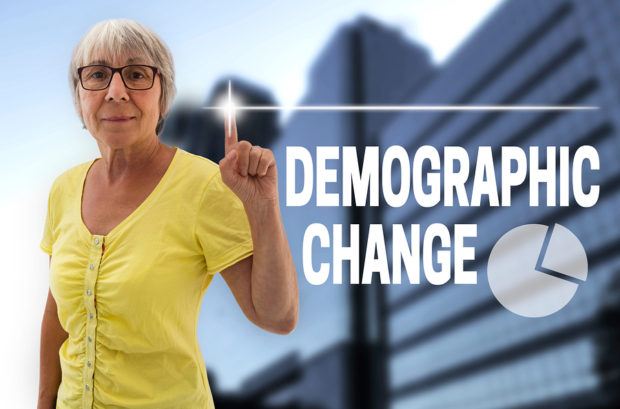 Future customers for U.S. personal lines insurers are shaping up to be starkly different, demographically speaking, than they have been previously, Conning asserts in a new report. With this in mind, the consulting firm urges carriers to adapt to factors that are leading to lasting market changes over time.
Future customers for U.S. personal lines insurers are shaping up to be starkly different, demographically speaking, than they have been previously, Conning asserts in a new report. With this in mind, the consulting firm urges carriers to adapt to factors that are leading to lasting market changes over time.
“The U.S. is undergoing significant changes in its social and economic structure, with far-reaching implications for insurers and the products and services they provide,” Conning says in its report, “Personal Lines Consumer Markets Annual: The Accelerating Pace of Change.”
Conning says that the trends are evolving slowly, but the end result “will yield a population and consumer base vastly different from what currently exists.”
What is driving this demographic change? Conning sees four initial factors at play:
- Slower population growth. Conning expects this will leave personal lines insurers re-evaluating their planning assumptions in order to be more in line with a lower growth rate. Why does this matter? That’s because, as Conning notes, premium growth is connected quite closely to population changes. If the consumer pool grows more slowly, that will place more pressure on industry pricing.
- A rapidly aging U.S. population. Conning points out that the rate of elderly folks relative to younger consumers will be much larger, with a “significant bulge” of the U.S. population hitting age 65 or above. In turn, consumers age 35-54 will grow more slowly, which will slow down growth rates in vehicle demand relative to historical experience. Expect this trend to continue for the next 20 years.
But beyond seniors getting older, their demographic is changing. Conning says that baby boomers are keeping their behavior and spending patterns with them as they become senior citizens, which could “change insurers’ assumptions about exposure growth and about risk characteristics.”
- Population shifts. While Conning notes that population will grow more slowly than normal, it will likely be much stronger in the South and the Western United States, and very little in the Northeast and Midwest. Conning points out that a stronger population growth means there will be big jumps in exposure units for both auto and homeowners insurance. Therefore, states with the population gains offer bigger opportunities for growth for personal lines insurers.
- Increased racial/ethnic diversity. Immigration and higher birth rates for non-white immigrants are creating a U.S. consumer base that is more diverse. Conning says insurers need to be aware of this in terms of marketing and product development, and also to make decisions on where to focus geographically.
Insurers would do well to be aware of the diversity of their consumer base in terms of the  design, production and promotion of their products and services, Conning says. That’s because each group will have its own “financial needs, channel preferences and attitudes toward insurance.”
design, production and promotion of their products and services, Conning says. That’s because each group will have its own “financial needs, channel preferences and attitudes toward insurance.”
Beyond those four factors, Conning warns that insurers must be on top of technological changes in terms of consumer demands and product delivery, expected trends of slow economic and wage growth, and culture changes, such as the shift from a traditional two-parent family home.
Also important for insurers to keep in mind: More and more of the population is less focused on car ownership. In other words, insurers should be aware of the inevitable growth of car and ride sharing and home sharing, and what that means in terms of products and services that personal lines insurers might be called on to provide in this new reality.
“The less an individual owns, the less they have an insurable interest in, the less insurance they need,” Conning says.
Source: Conning





















 Surge of Supercharged Hurricanes Prompt Call for Cat 6 Classification
Surge of Supercharged Hurricanes Prompt Call for Cat 6 Classification  Good Times for U.S. P/C Insurers May Not Last; Auto Challenges Ahead
Good Times for U.S. P/C Insurers May Not Last; Auto Challenges Ahead  Breaking: Andersen to Replace Zaffino as CEO of AIG on June 1
Breaking: Andersen to Replace Zaffino as CEO of AIG on June 1  California Workers Comp Combined Ratio for 2024 Highest in 20-Plus Years
California Workers Comp Combined Ratio for 2024 Highest in 20-Plus Years 



